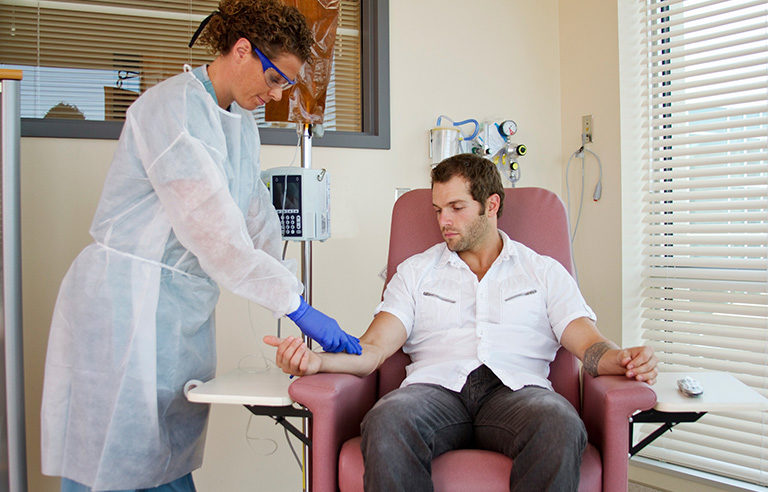Researchers examine link between safety climate and nurses’ exposure to chemotherapy drugs

Photo: Trish233/iStockphoto
Washington – An improved organizational safety climate – including increased management commitment – may help prevent exposure to liquid antineoplastic drugs among nurses who administer the medications, a recent NIOSH study suggests.
Liquid antineoplastic drugs are used during chemotherapy to treat cancer, as well as arthritis, multiple sclerosis and other conditions. The drugs kill cancer cells but also can harm healthy tissue, making them potentially hazardous to health care workers who handle them.
Researchers analyzed data from the 2011 Health and Safety Practices Survey of Healthcare Workers, examining the responses of 1,814 nurses employed by either a hospital or ambulatory health care center who had applied liquid antineoplastic drugs in the past seven days.
Results showed that about 14 percent of nurses experienced an adverse event – such as spilling, leakage or skin contact – during the previous week. The absence of adverse events was linked to consistent use of personal protective equipment and engineering controls, established precautionary measures, and a heightened commitment to safety from management.
Other findings:
- Nurses in nonprofit organizations and government settings used PPE and engineering controls more consistently than those in for-profit settings.
- Nonprofit and government nurses were found to be more familiar with safe handling guidelines and procedures than counterparts in for-profit settings. According to a July 18 press release, “perceived management commitment to safety was higher” in nonprofit and government settings, as well.
- Adverse events were linked to an increased number of antineoplastic drug applications or the administering of the drugs on more days of the week.
“These results point to the value of implementing a comprehensive health and safety program that utilizes available hazard controls and effectively communicates and demonstrates the importance of safe handling practices,” the study states. “Such actions also contribute to creating a positive safety climate.”
The study was published in the July issue of the Journal of Occupational and Environmental Hygiene.
Post a comment to this article
Safety+Health welcomes comments that promote respectful dialogue. Please stay on topic. Comments that contain personal attacks, profanity or abusive language – or those aggressively promoting products or services – will be removed. We reserve the right to determine which comments violate our comment policy. (Anonymous comments are welcome; merely skip the “name” field in the comment box. An email address is required but will not be included with your comment.)

